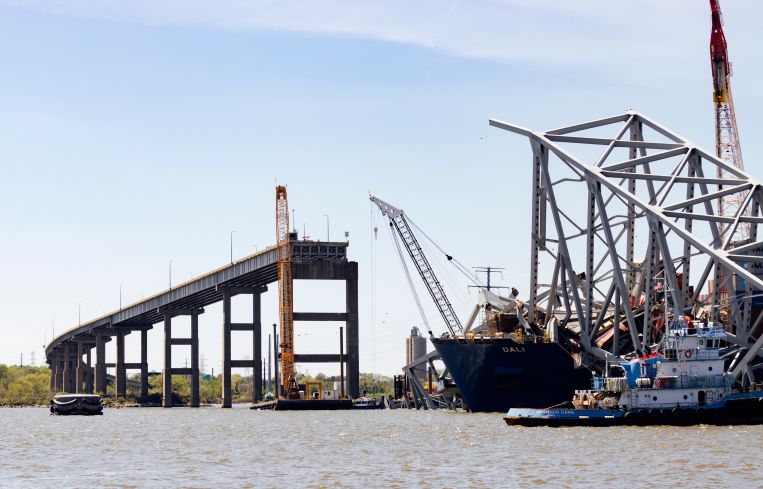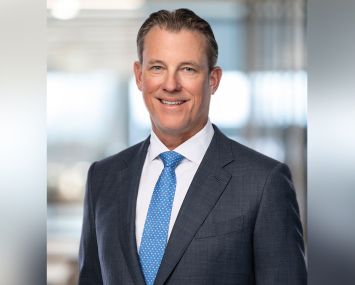First Cargo Ship Since Bridge Collapse Passes Through Baltimore Harbor
By Nick Trombola April 25, 2024 1:28 pm
reprints
The deep-water channel in the Port of Baltimore is open for business again — more or less.
The first cargo ship to pass through the channel since the Francis Scott Key Bridge collapsed last month made the journey on Thursday morning, according to the Associated Press. Cleanup and salvage crews have been working hard to clear tons of debris left by the bridge after it was struck by a malfunctioning container ship on March 26, ultimately killing six people.
The Balsa 94, a bulk carrier headed for St. John, Canada, was the lucky contender to make the maiden voyage after the bridge collapse, guided through the waterway by two tug boats. Four other vessels were left stranded at the Port when the bridge collapsed, according to the AP.
Yet, the newly cleared channel is a temporary one, just 35 feet across compared to the 700 feet when the channel was fully operational. Pieces of the bridge are still blocking chunks of the 50-foot-deep waterway.
The Port of Baltimore is one of the busiest ports in the nation, handling 52.3 million tons of international cargo, valued at some $81 billion, in 2023 alone, according to Maryland state data. It also regularly ranks first among all American ports in terms of car shipments, with 850,000 cars and light trucks handled last year.
While the newly reopened channel is good news for maritime shipments, it remains a huge headache for trucking logistics and daily commuters.
The bridge, which spanned 1.6 miles across the Patapsco River, was used by about 31,000 vehicles per day, or well over 11 million per year, according to the Maryland Transportation Authority. Those drivers have two bad and one worse detour options: either pass through the Fort McHenry or Baltimore Harbor Tunnels, which already see respective averages of 116,000 and 77,000 vehicles per day, or circumvent the city altogether using the notoriously construction-laden Interstate 695 (Baltimore Beltway).
A replacement bridge isn’t expected to be completed until 2030 at the earliest.
Nick Trombola can be reached at ntrombola@commercialobserver.com.


